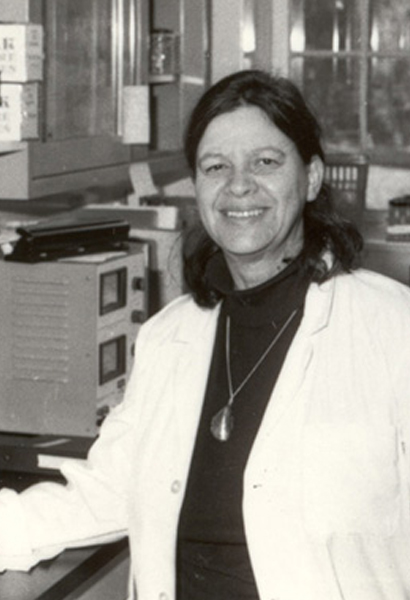

Birth: December 18, 1922
Death: November 11, 2006
Specialty: Microbiology
Major Contributions:
Discovery of bacterial virus λ
Improved replica plating techniques
Founder and Director of Plasmid Reference Center
Image Source: Wikimedia Commons
Esther Lederberg was educated at Hunter’s College, Stanford, and the University of Wisconsin culminating in a Ph.D. in 1950 – the same year she made her first major discovery. Lederberg was the first to isolate the lambda bacteriophage, a DNA virus, from Escherichia coli K-12. Her paper on the topic helped lead to an understanding of specialized transduction which helps explain one mechanism of the transfer of bacterial resistance. She worked at the University of Wisconsin for most of the 1950s including more work with E. Coli and the discovery of the Fertility Factor.
As with many women in science, her contributions to the work of others was often overlooked or down played due to the environment of scientific research at the time. Working alongside her husband for many years resulted in what some saw as an uneven distribution of the credit for the discoveries the pair made together, including the development of a method of replica plating created to solve the problem of reproducing bacterial colonies en masse in the same geometric configuration as on the original agar plate. There were various ways to create these colonies but one of the best methods was using velveteen almost like a rubber stamp to reproduce the samples needed. She had created a simpler, more efficient method.
1959 brought the Lederbergs back to Stanford where she fought for a position reflective of her knowledge, experience, and contributions to the study of microbiology, being forced to start out as an adjunct to prove her worth. While at Stanford she founded the Plasmid Reference Center and acted as its director from 1976 to 1986, one year after officially retiring. As the center’s director she initiated a system of naming insertion sequences and transposons.
Not only was she passionate about science, but she also loved music from the Medieval, Renaissance and Baroque periods of Western music using original instruments. In 1962 she founded the Mid-Peninsula Recorder Orchestra that is still active today performing musical selections from the 13th century to modern times. Lederberg passed away in 2006 leaving a legacy of experimental techniques used by microbiologists around the world.
Written by Angela Goad
Sources:
Esther Lederberg, Pioneer of Bacterial Genetics
Esther Lederberg, pioneer in genetics, dies at 83
See Also:
Esther Lederberg, 83; helped unlock mysteries of bacteria and viruses
Mid-Peninsula Recorder Orchestra
Discover of phage Lambda and Lysogenicity: 1950
